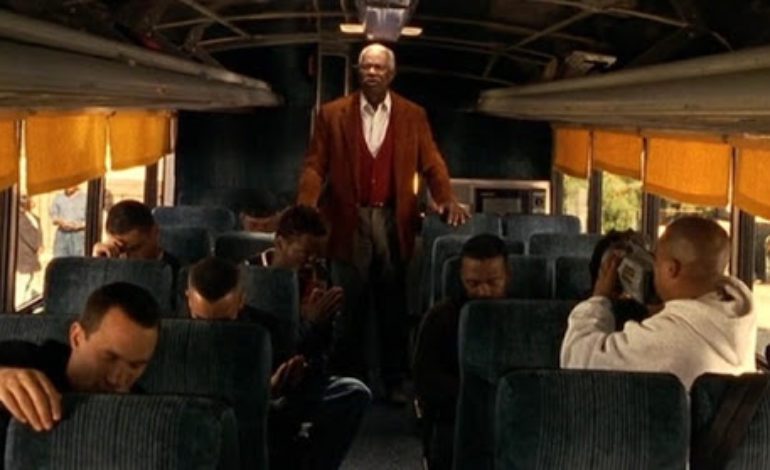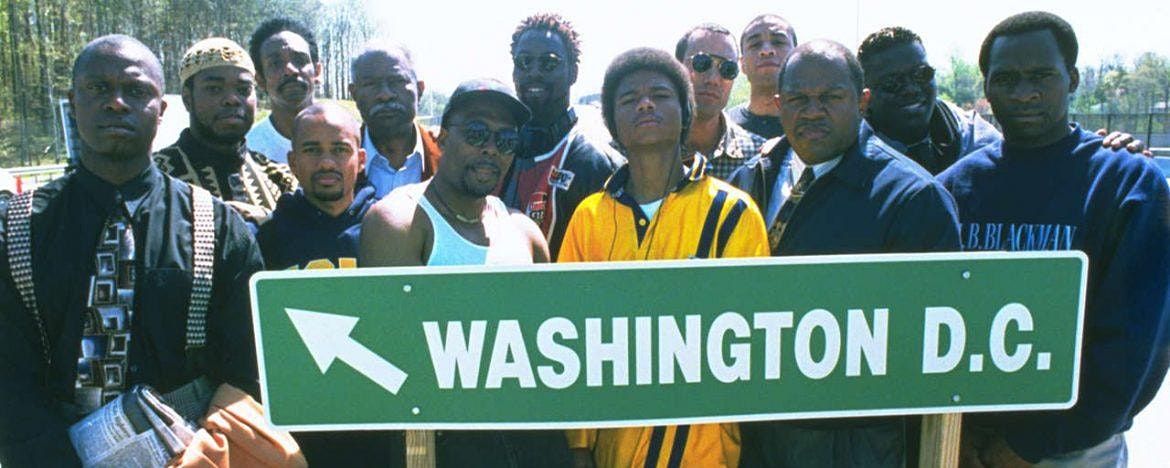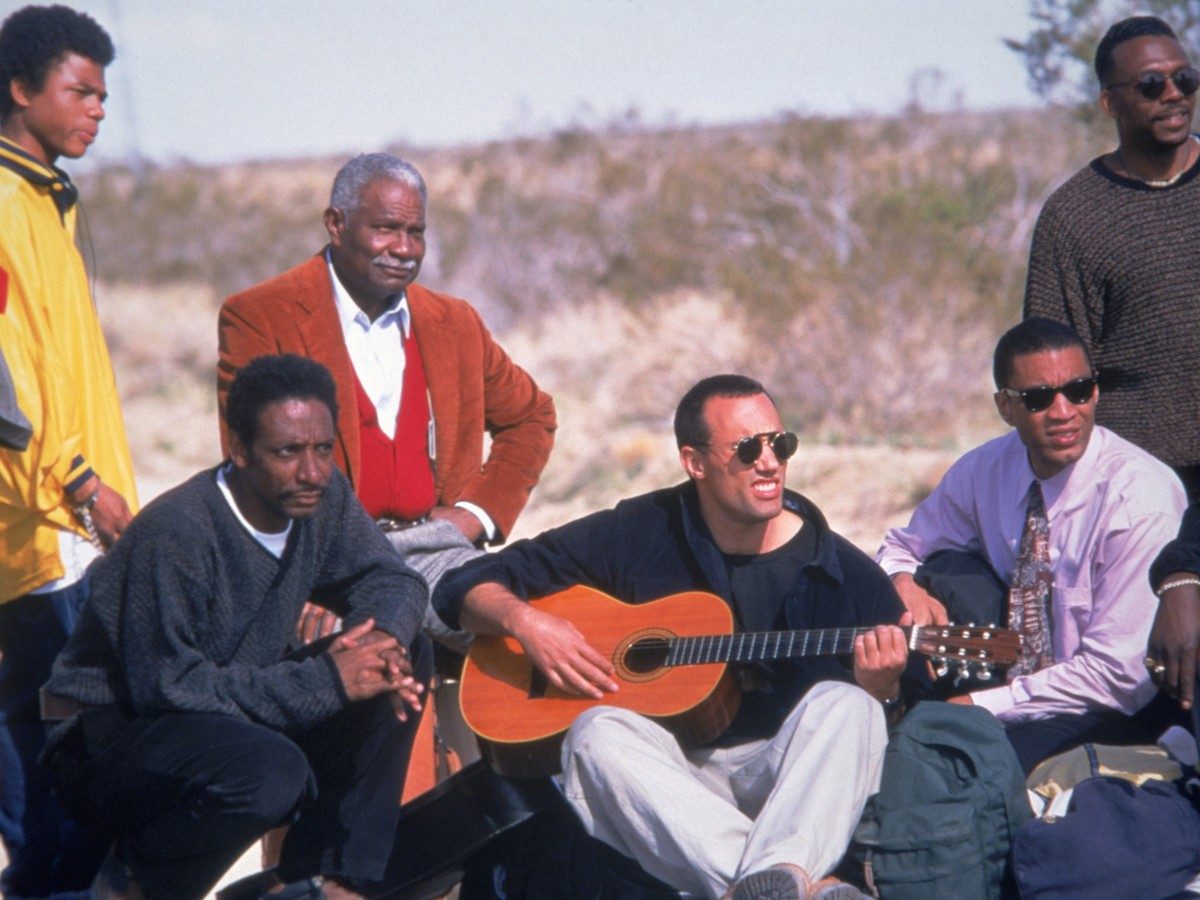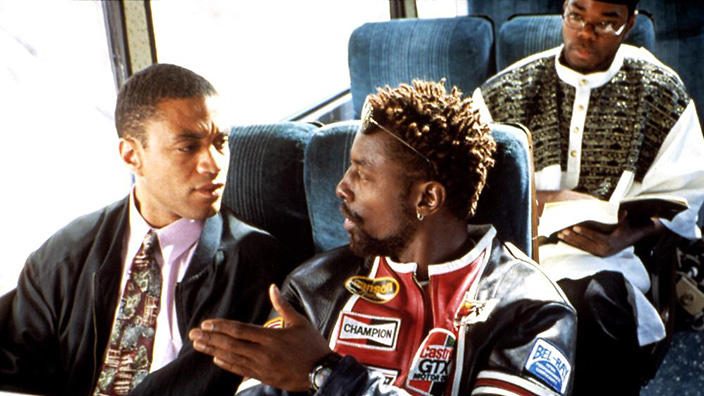

Spike Lee’s 1996 film Get on the Bus tells a very simple story: fifteen black men get on a bus and spend the next three days driving to the Million Man March, with only a few minor interruptions along the way. Despite being rooted in a very specific moment in time and largely confined to an even more specific location, the issues that the film deals with are not limited in scope. As the group makes their way from Los Angeles to Washington, D.C., they explore the questions of race, identity, and responsibility that inspired them to put their own lives on hold and take part in a truly historic moment. In doing so, the characters tell a much bigger story, the story of what it means to be black in America. It is not a single story, of course. Each passenger brings his own unique experiences, beliefs, and prejudices to their journey. Even with all their differences, they remain united by a shared history and the common goal of standing together at the front lines of the revolution.


The man are mostly strangers to each other when they first board The Spotted Owl bus in a small Los Angeles parking lot. As they get to know each other, they discover that their similarities end with their skin color. Gary (Roger Guenveur Smith) is a bi-racial member of the LAPD, while Jamal (Gabriel Casseus) is a former gangster turned Muslim. Jeremiah (Ossie Davis) missed the original March on Washington because he was too busy trying to assimilate his way up the corporate ladder. Xavier (Hill Harper) is a young film student making a documentary about the trip for his thesis project. Evan (Thomas Jefferson Byrd) quite literally drags his son, Evan Jr. (De’Aundre Bonds) along for the ride, since the pair are legally tethered together as the result of a misdemeanor grocery store robbery and a court order. Kyle and Randall (Isaiah Washington and Harry Lennix) are a gay couple in the midst of an increasingly public breakup, much to the chagrin of the homophobic Flip (Andre Braugher), an actor whose biggest claim to fame is almost getting Ice Cube’s role in Boyz n the Hood. The group is rounded out by Jay (Bernie Mac), a bubble gum entrepreneur, Mike (Steve White), a conspiracy theorist, and a few other passengers who keep to themselves. Under the supervision of their full-time bus driver and amateur motivational speaker, George (Charles S. Dutton), the men make their way through the American heartland to see if this march can really make a difference.


While the bus makes a few stops along the way – from a dinner break in Memphis to a racially motivated drug search in Knoxville – most of the film takes place in and around the bus itself, playing out as a series of short vignettes and conversations. As the group rides and talks, we are presented with a collection of character studies, with each man tells his own story in turn, or philosophizing about the systemic racism in America. More often than not, the topic of conversation ultimately turns back to the things that separate them. Their sexualities, their religions, their views on Farrakhan as a leader, their parents. It’s all fair game, and all cause for division.


The division is usually short-lived, though. These conversations about what it means to be black form the backbone of the movie, and while their debates can sometimes get heated, they rarely cause any lasting friction. Moving from topic to topic, the men and the people they encounter present a wide variety of perspectives on the issues affecting the black community. Whether it’s a debate about the acceptability of Jamal’s criminal past or the role of white people in their revolution, the group approaches each issue from all sides without ever achieving consensus. That’s one of the most powerful things about the movie. Reggie Rock Bythewood’s script is never prescriptive about who is right and exactly what needs to happen to cause significant change. What’s important is that these conversations can happen without tearing the group apart. Even during one of the film’s most dramatic moments, when an argument erupts into a full-blown fist fight and the passengers disembark to cheer on the combatants, they quickly and wordlessly coalesce into a unified group again when Evan, Jr. runs off into the woods and a search party is formed. It’s a moment that is perfectly symbolic of the ultimate message of the film. These characters may be different, and they may never be able to fully let those differences go. Yet they remain bonded by the experience of being a black man in America, and by their hopes that there might be a better world after Washington.
VERDICT: 4 out of 5 stars.
Get on the Bus is a powerful portrait of a movement. Showing the diversity and divisions of the people who make up that movement helps underscore the strength of the message that brings them together. Despite the technical limitations that belie the film’s low budget, or the myriad O.J. Simpson references that plague most media from the mid-90s, Get on the Bus remains timeless thanks to its thoughtful discussions about difficult issues. It is an inspiring story for a moment in history where we continue to have the same conversations, but often struggle to find a sense of unity at the end of them.
